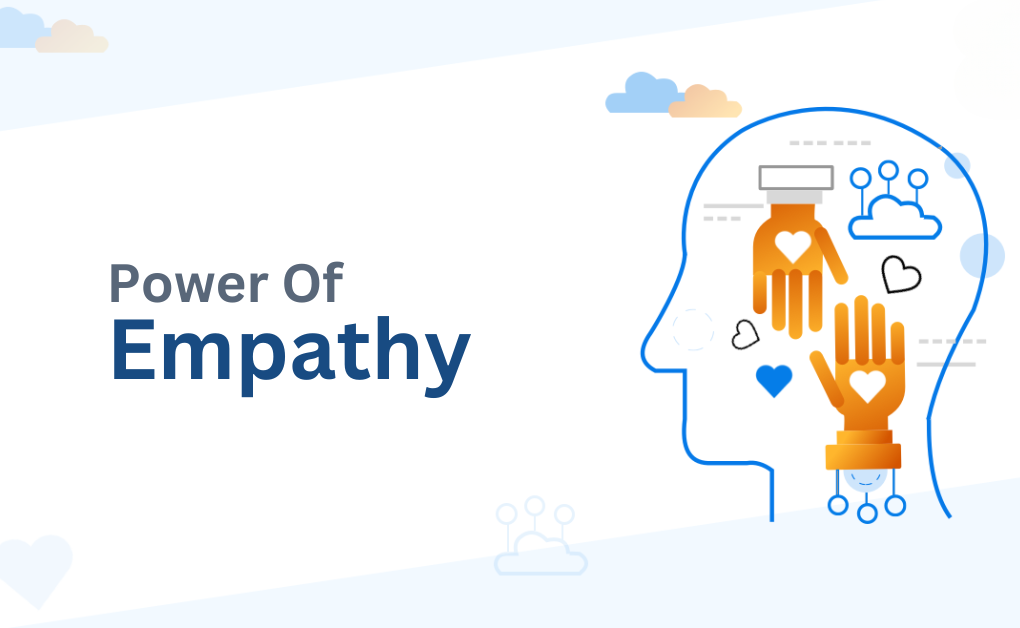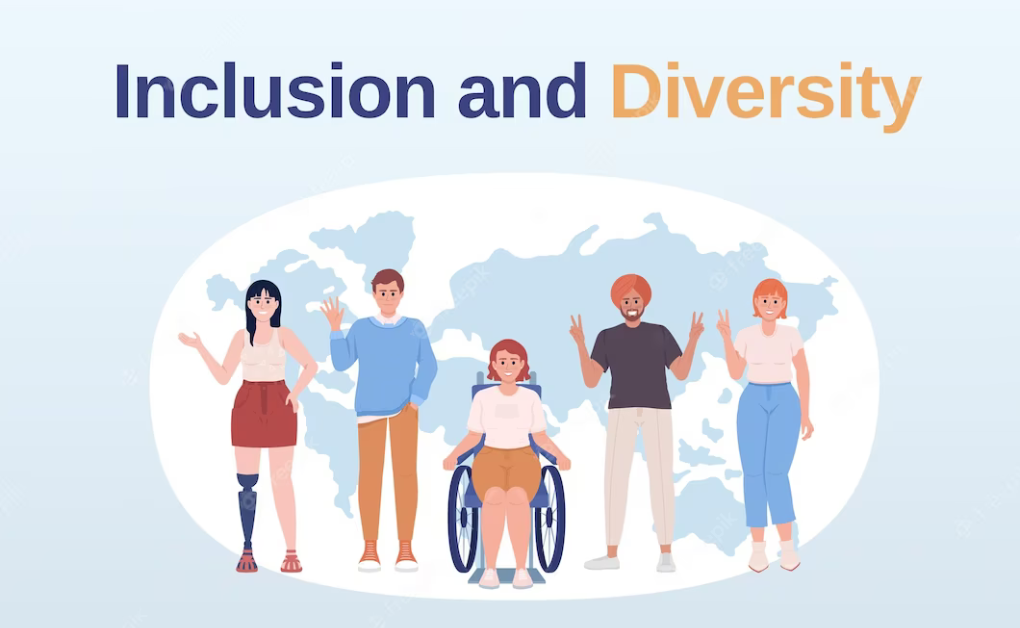Designing for All: The Art and Science of Inclusive Design
In a rapidly evolving world where technology is seamlessly integrated into our daily lives, the importance of inclusive design cannot be overstated. Gone are the days when products were designed for a narrow, homogenous audience. Today, inclusivity is not just a buzzword; it’s a fundamental principle that shapes the way we create products and experiences. In this blog “Designing for All: The Art and Science of Inclusive Design”, we embark on a journey through the fascinating world of inclusive design, exploring its significance, delving into accessibility and usability, and understanding the nuances of designing for diverse user groups.
The Heart of Inclusive Design

At its core, inclusive design is about ensuring that products and experiences are accessible and usable by as many people as possible, regardless of their age, abilities, or background. It’s about breaking down barriers and embracing diversity in all its forms. The driving philosophy is simple: if a product or service is designed with inclusivity in mind, it benefits everyone, not just a select few.
1.The Accessible Web
One of the most prominent aspects of inclusive design is web accessibility. In today’s digital age, the internet is a gateway to information, services, and communication. Hence, making the web accessible to all is paramount. This involves ensuring that websites and web applications can be used by individuals with disabilities, including those who are blind, deaf, or have motor impairments.
Web Content Accessibility Guidelines (WCAG)
The Web Content Accessibility Guidelines (WCAG) provide a comprehensive framework for designing and developing accessible web content. These guidelines cover a wide range of areas, including:
Perceivable: Ensuring that information and user interfaces are presented in ways that users can perceive, regardless of their sensory abilities.
Operable: Making user interface components and navigation usable for all, including those who rely on keyboards or alternative input devices.
Understandable: Ensuring that content is clear and easy to understand, avoiding jargon and complexity that might exclude some users.
Robust: Creating content that can be reliably interpreted by a wide variety of user agents, including assistive technologies.
2.The Inclusive User Experience
Beyond web design, inclusive design extends to all facets of the user experience. This means considering the needs of individuals with disabilities when designing physical products, software interfaces, and even public spaces. Imagine a world where every aspect of our environment is designed with inclusivity in mind, making life more accessible for everyone.
Universal Design Principles
Universal design principles emphasize the creation of products and spaces that are inherently accessible to all. For example, curb cuts, initially designed for wheelchair users, benefit parents with strollers, travelers with luggage, and anyone who appreciates a smooth transition from sidewalk to street. These principles underscore the idea that inclusive design isn’t just about addressing disability; it’s about enhancing usability and convenience for everyone.
The Power of Empathy

Inclusive design begins with empathy – the ability to understand and share the feelings of another. Designers must immerse themselves in the lives of their potential users, learning about their challenges, preferences, and needs. Only by seeing the world through different lenses can we create products that truly cater to a diverse audience.
1.Co-Creation with Diverse User Groups
To ensure that products are genuinely inclusive, involving diverse user groups in the design process is invaluable. Conducting usability testing with individuals who have disabilities, seeking their feedback, and incorporating their insights into the design can lead to remarkable results. Inclusive design isn’t a one-size-fits-all approach; it’s a collaborative effort that benefits from the wisdom of many. This is also a good way of Designing for All: The Art and Science of Inclusive Design.
Designing for the Senses

Inclusive design goes beyond accommodating physical disabilities. It considers the full spectrum of human senses, including sight, hearing, touch, taste, and smell. Designing for the senses creates richer, more engaging experiences for everyone.
1.Inclusive Visual Design
In the realm of visual design, choosing colors with high contrast and providing alternative text for images not only helps individuals with visual impairments but also enhances readability for all users. These practices are simple yet powerful tools in the inclusive designer’s arsenal.
2.Auditory Inclusivity
Incorporating auditory cues into digital interfaces can greatly benefit users with hearing impairments. Moreover, it can enhance the user experience for everyone, adding depth and engagement to multimedia content.
3.The Power of Haptic Feedback
Haptic feedback, such as vibrations or touch-based interactions, can provide valuable information to users with visual or auditory impairments. For instance, a subtle vibration can indicate a successful action in a smartphone app, benefiting users with hearing or visual impairments.
Beyond Disabilities: Diversity and Inclusion

Inclusive design isn’t limited to addressing disabilities; it also embraces diversity in all its forms. This includes accommodating cultural differences, language preferences, and varying levels of technological literacy.
1.Multilingual Design
In a globalized world, multilingual design is essential. Ensuring that your website or product can be easily translated and localized allows it to reach a broader audience. Beyond language, consider cultural nuances that can affect user preferences and expectations.
2.Age-Friendly Design
Designing for diverse age groups is another facet of inclusive design. Consider the needs of older adults, who may require larger text, simplified interfaces, or assistance with navigation. Designing for this demographic not only benefits seniors but also enhances usability for users of all ages.
The Business Case for Inclusive Design

Investing in inclusive design is not only a moral imperative but also a smart business decision. Companies that prioritize inclusivity can tap into untapped markets, foster customer loyalty, and build a positive brand image.
1.Expanding Your Market Reach
By designing products and services that are accessible to a wider audience, you open doors to previously untapped markets. For example, an e-commerce platform that offers accessible shopping features can attract customers with disabilities who might have previously struggled to make online purchases.
2.Building Brand Loyalty
Inclusivity resonates with consumers. When individuals perceive a brand as inclusive and considerate of their diverse needs, they are more likely to become loyal customers and advocates.
3.Complying with Regulations
Many countries have introduced accessibility regulations that require businesses to make their digital platforms and physical spaces accessible. Complying with these regulations not only avoids legal consequences but also showcases your commitment to inclusivity.
The Continuous Journey of Inclusive Design
Inclusive design is not a destination but a journey. It’s an ongoing commitment to creating products and experiences that evolve alongside the needs and expectations of users. As technology advances and our understanding of diversity deepens, the principles of inclusivity will continue to shape the future of design.
Conclusion
Designing for All: The Art and Science of Inclusive Design:- Inclusive design is more than a design philosophy; it’s a way of thinking that celebrates diversity, empowers individuals, and enriches the world around us. As we embrace inclusivity in our design processes, we create a world where everyone has the opportunity to fully participate and thrive. So, let’s embark on this exciting journey of inclusive design, where creativity knows no bounds, and the possibilities are as limitless as our collective imagination. Together, we can design a future where everyone belongs.







